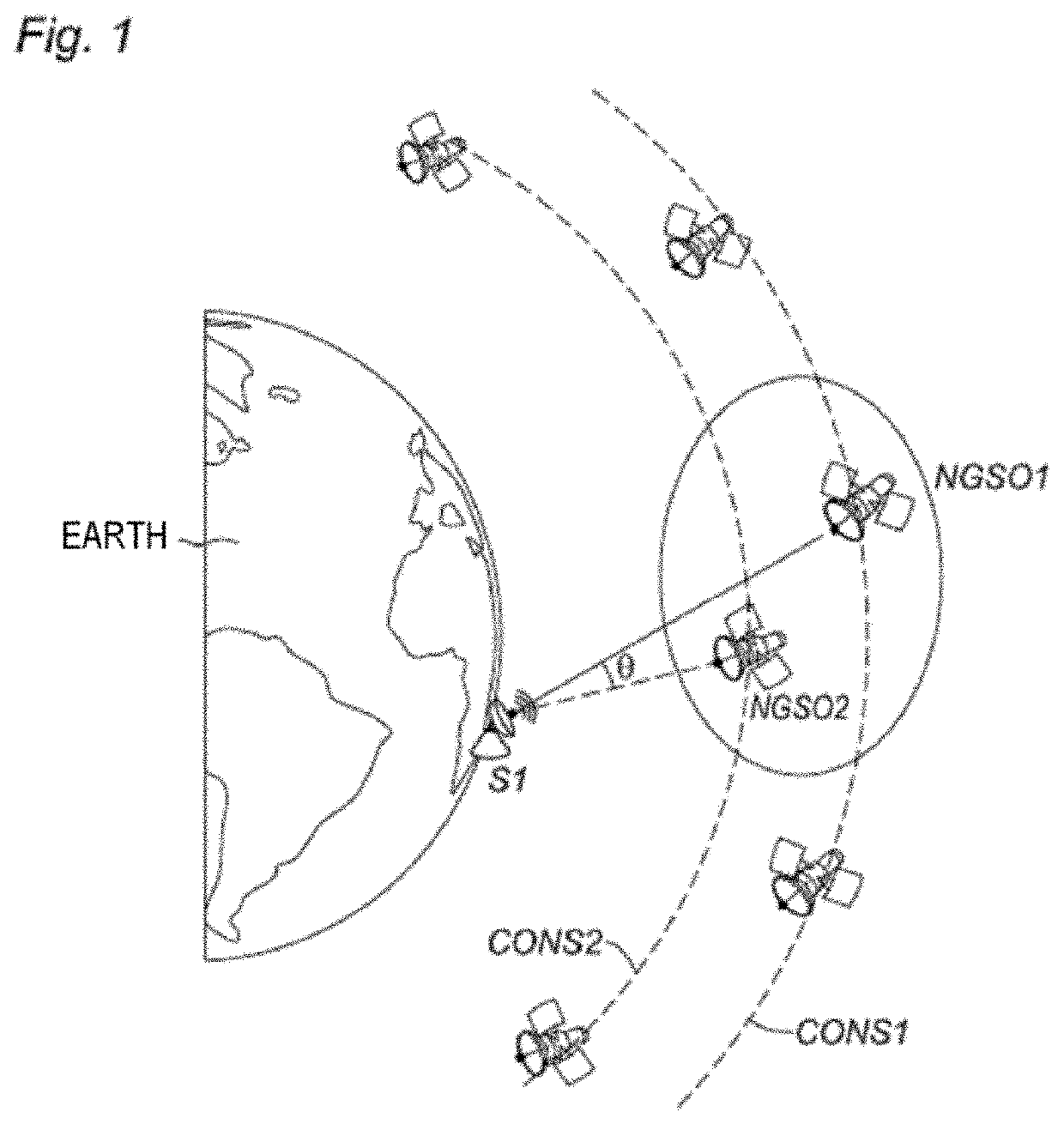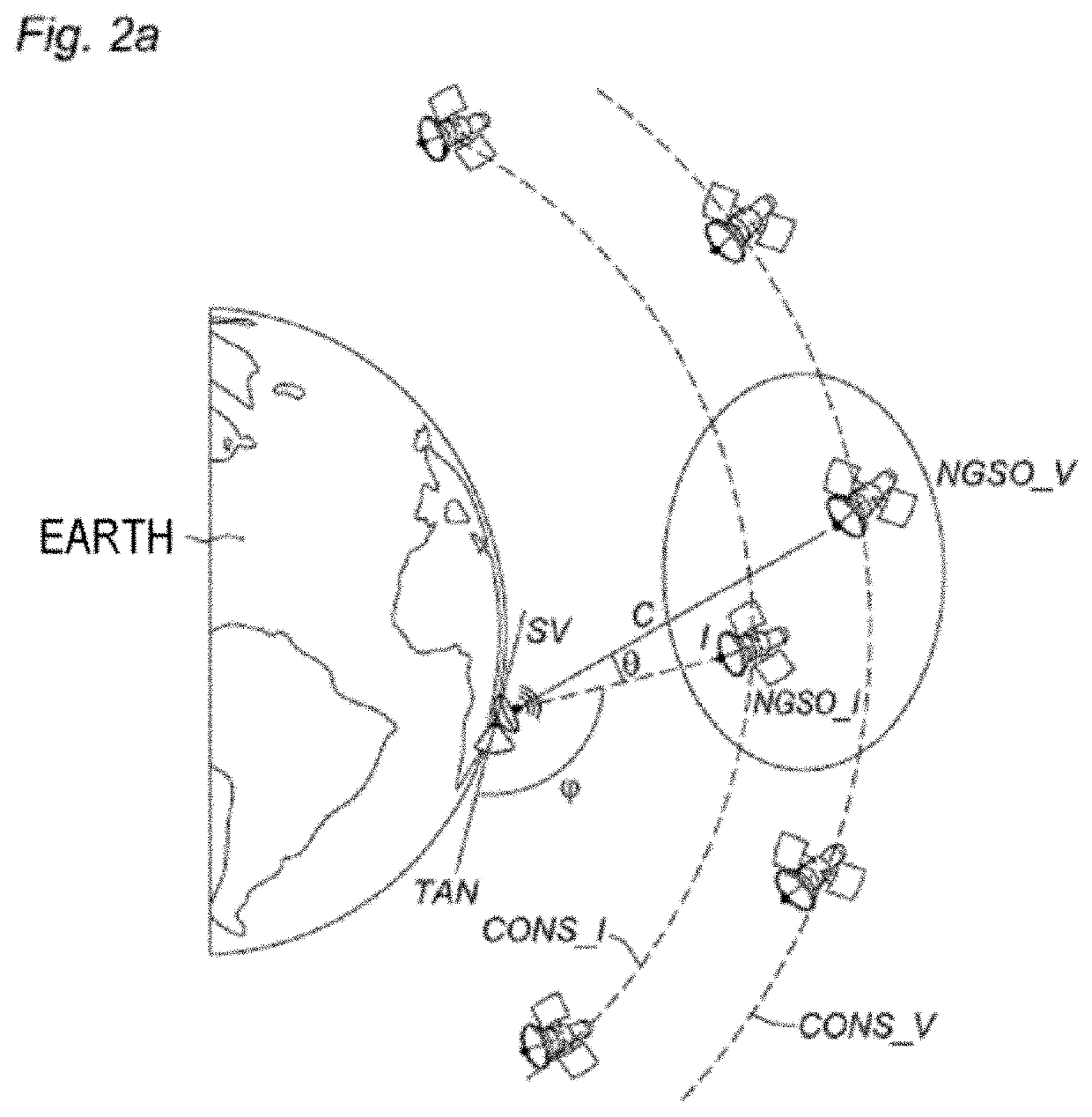Method for determining constraints of a non-geostationary system with respect to another non-geostationary system
a non-geostationary system and constraint technology, applied in power management, electrical equipment, radio transmission, etc., can solve the problems of large number of operational constraints, large number of strict constraints, and inflexible constraints
- Summary
- Abstract
- Description
- Claims
- Application Information
AI Technical Summary
Benefits of technology
Problems solved by technology
Method used
Image
Examples
first embodiment
[0054]FIG. 3 presents a diagram of the steps of the method according to a The first application case (FIG. 2a) is taken for the description of FIGS. 3 to 7.
[0055]In a first step 201, for each instant of a time interval and for a terrestrial station SV at a point on the Earth, satellites of the interfering constellation CONS_I and a satellite NGSO_V of the victim constellation CONS_V are selected according to a selection criterion. In the example described, the satellites of the interfering constellation CONS_I and a satellite NGSO_V are selected which minimize the signal-to-noise and interference ratio R on the link between the terrestrial station SV and the satellite of the victim constellation CONS_V. However, it is also possible to select the satellite NGSO_V of the victim constellation that has the highest elevation in this constellation with respect to the terrestrial station SV. It is also possible to select an interfering satellite CONS_I that has the longest time of visibil...
second embodiment
[0079]FIG. 4 represents a diagram of the steps of the method according to a The first 201, second 202 and third 203 steps are identical to the steps 201, 202 and 203 described with reference to FIG. 3.
[0080]In this second embodiment, three additional steps 204, 205 and 206 are performed to adjust the surface equation determined in the third step 203 to an operational situation.
[0081]There are therefore selected, in the fourth step 204, for each instant of the time interval and for a satellite of the victim constellation linked with the terrestrial station, the satellites of the interfering constellation which have topocentric angle θ, elevation angle φ and interference-to-noise ratio I / N values such that, for these angle values θ and φ, the interference-to-noise ratio I / N is less than or equal to the interference-to-noise ratio determined by the surface equation of the step 203 for these same angle values θ and φ.
[0082]Then, in the fifth step 205, a determination is made as to inst...
PUM
 Login to View More
Login to View More Abstract
Description
Claims
Application Information
 Login to View More
Login to View More - R&D
- Intellectual Property
- Life Sciences
- Materials
- Tech Scout
- Unparalleled Data Quality
- Higher Quality Content
- 60% Fewer Hallucinations
Browse by: Latest US Patents, China's latest patents, Technical Efficacy Thesaurus, Application Domain, Technology Topic, Popular Technical Reports.
© 2025 PatSnap. All rights reserved.Legal|Privacy policy|Modern Slavery Act Transparency Statement|Sitemap|About US| Contact US: help@patsnap.com



